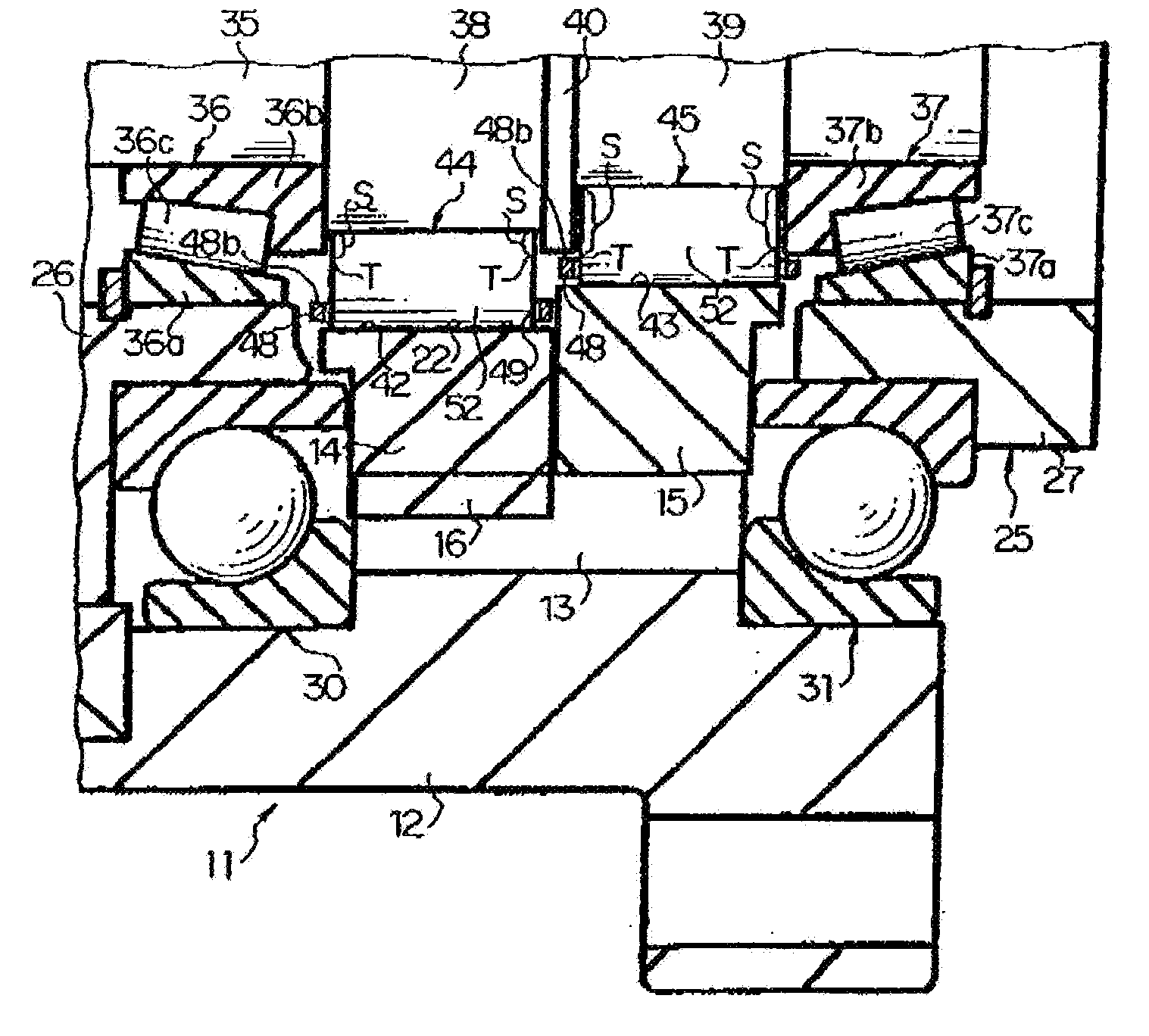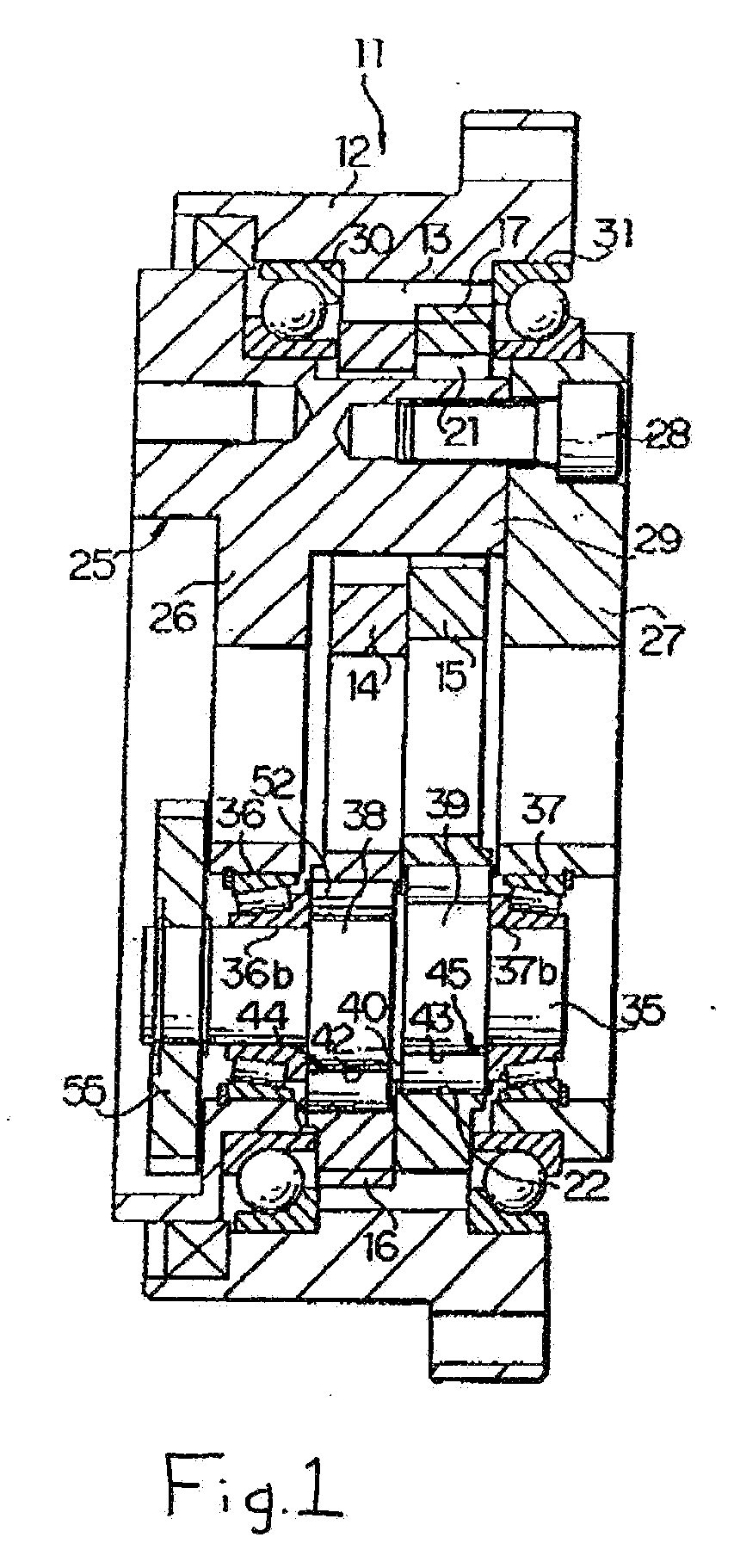Needle Bearing and Speed Reducer Using The Needle Bearing
- Summary
- Abstract
- Description
- Claims
- Application Information
AI Technical Summary
Benefits of technology
Problems solved by technology
Method used
Image
Examples
Embodiment Construction
[0020] One preferred embodiment of the present invention will now be described with reference to the drawings.
[0021] In FIGS. 1 and 2, reference numeral 11 denotes a planetary gear speed reducer (more specifically, an eccentric rotary-type speed reducer) used in a robot or the like, and this speed reducer 11 includes a rotary casing 12 (serving as an output member) mounted on an arm, a hand or the like (not shown). A multiple of internal-tooth pins 13 (serving as internal teeth) are fixed to an inner periphery of the rotary casing 12 in substantially half-inserted relation thereto, and these internal-tooth pins 13 extend in an axial direction, and are spaced at equal intervals in a circumferential direction. A plurality of (two) ring-like external gears 14 and 15 (serving as external members) are received within the rotary casing 12, and are juxtaposed to each other in the axial direction. External teeth 16 are formed on the outer periphery of the external gear 14, while external t...
PUM
 Login to View More
Login to View More Abstract
Description
Claims
Application Information
 Login to View More
Login to View More - R&D
- Intellectual Property
- Life Sciences
- Materials
- Tech Scout
- Unparalleled Data Quality
- Higher Quality Content
- 60% Fewer Hallucinations
Browse by: Latest US Patents, China's latest patents, Technical Efficacy Thesaurus, Application Domain, Technology Topic, Popular Technical Reports.
© 2025 PatSnap. All rights reserved.Legal|Privacy policy|Modern Slavery Act Transparency Statement|Sitemap|About US| Contact US: help@patsnap.com



